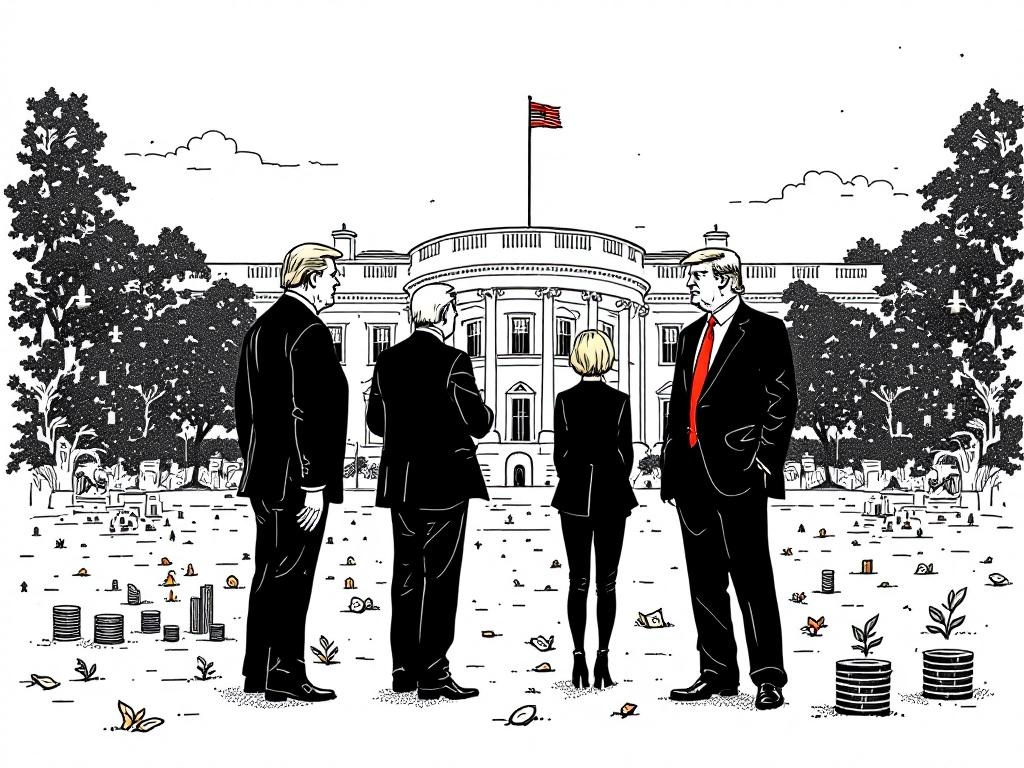White House Defends Trump Amid Economic Concerns Following Labor Chief's Dismissal

Washington, D.C., Monday, 4 August 2025.
Amid growing economic concerns, the White House defends Trump’s leadership after dismissing the U.S. labor statistics head, raising questions about job market stability and upcoming trade tariffs.
Discontent Grows Over Labor Chief’s Dismissal
The recent dismissal of Erika McEntarfer, the U.S. Bureau of Labor Statistics commissioner, by President Trump has sparked widespread criticism. The decision, attributed to poor job growth figures, has prompted concerns about the reliability of future labor statistics. The firing came after statistics showed the U.S. economy added only 73,000 jobs in July 2025, well below expectations of 115,000 [1][2][3]. Former BLS Commissioner William Beach warned of the potential erosion of trust in the Bureau’s data quality following McEntarfer’s removal, asserting, ‘This is damaging…it undermines credibility in BLS’ [1].
Economic Indicators Paint a Mixed Picture
While defending the leadership of President Trump, White House officials have faced challenges over economic indicators that reveal a less favorable job market than projected. Despite assertions from Trump about a strong economic performance, the data tells a complex story. For example, the Labor Department’s revised figures significantly reduced previous job gains, indicating only 14,000 jobs were added in June 2025, down from 147,000 initially reported [4]. Furthermore, the unemployment rate marginally increased to 4.2% [5]. Meanwhile, job cuts rose sharply, with employers eliminating 62,075 positions in July, marking a 29% monthly increase [6][7].
Tariff Policies Contributing to Economic Anxiety
Alongside employment concerns, the Trump administration’s trade policies have added another layer of complexity to the economic scenario. New tariffs, announced on July 31, 2025, include sizeable duties on a range of imports, reflecting a strategic shift in U.S. trade policy [8][9]. The administration’s extensive tariff program aims to protect domestic industries and boost manufacturing, although critics suggest it risks global trade tensions and consumer price surges. U.S. consumers are expected to face average tariff-related costs of $2,400 per household due to increased goods prices, particularly in the shoe and clothing sectors, which anticipate price hikes of 40% and 38%, respectively, in the short term [10].
Political Implications and Future Outlook
The economic challenges facing the Trump administration could have significant implications for the 2024 election landscape. With presidential primary debates approaching, economic performance remains a pivotal topic. An expected increase in interest rates due to inflation concerns could further strain household budgets, though significant policy shifts at the Federal Reserve are yet to be confirmed [11][12]. As inflation persists, trade-related costs rise, and employment rates waver, political analysts note that these amplified economic pressures may influence voter sentiment and, ultimately, Trump’s political prospects [10][12].
Sources
- www.theguardian.com
- www.c-span.org
- www.aljazeera.com
- www.npr.org
- www.guardian.com
- www.theguardian.com
- www.aljazeera.com
- www.cnbc.com
- www.dw.com
- www.theguardian.com
- www.npr.org
- www.theguardian.com